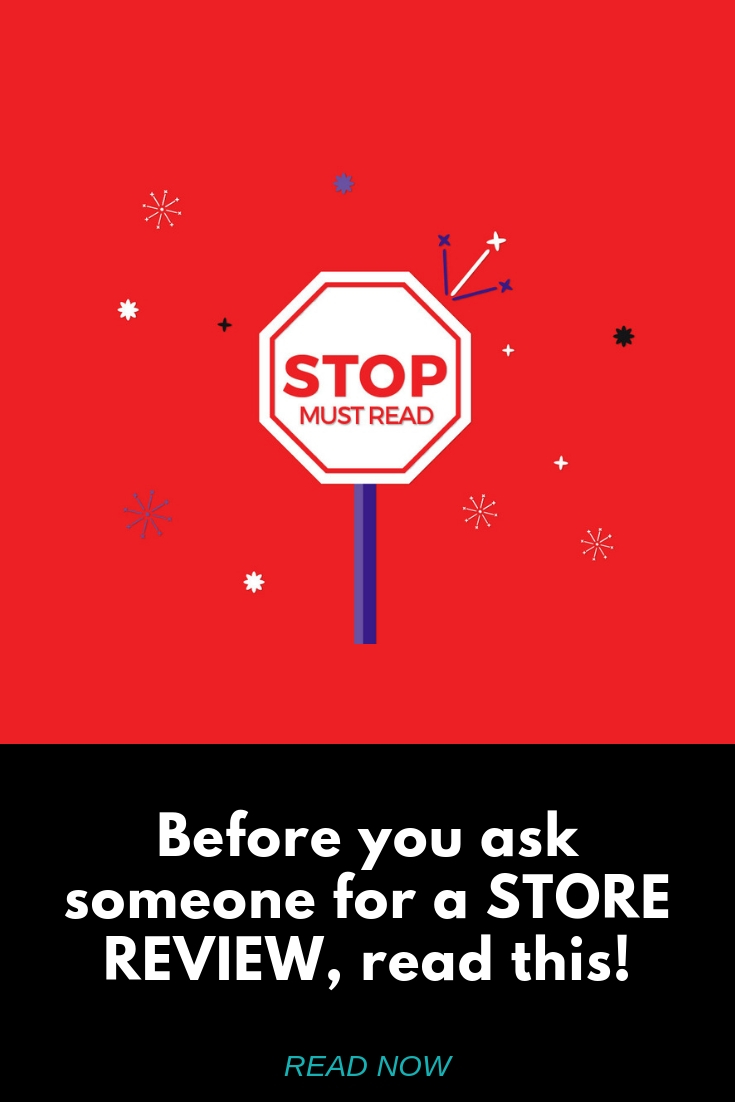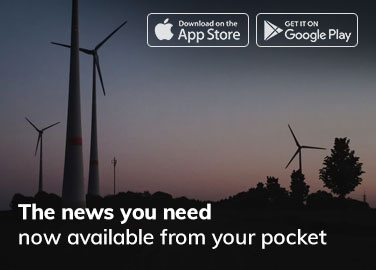Disclosure: Some of the links below are affiliate links, meaning, at no additional cost to you, Storehacks may earn a commission if you click a link to an external source.
You've got lots of traffic but no sales… It's a common scenario and one that can be easily fixed with a few simple tweaks to your website.
It's the question everyone starting out in eCommerce asks at some point. Heck, occasionally I still do, but the good news is, if you've got the traffic it means that you have a product that's compelling enough to have someone click through to your store.
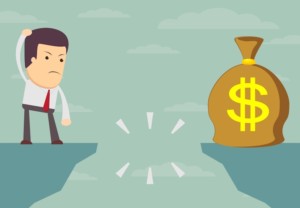
However, somewhere between landing on your website, viewing the product and checking out you're losing your potential customers.
What is going so wrong and why are they leaving already?
In this article, we are going to look at a few key factors that will ensure your customers are checking out faster than a checkout chick at knockoff.
What you'll learn in this article;
- How to build a trustworthy site
- Finding a business name
- The importance of website speed
- Why web design matters
- Importance of good quality logos and imagery
- and much more!
But, before we begin be sure to read through the Shopify Experts 12 Do's or Don'ts for eCommerce Success for a few more tips and tricks. There are tips and tricks that you can implement immediately that will have those conversions popping.
MUST-READ: Big traffic, zero sales?
This is why.
You've spent the time to find quality products, got a great ad image and some great ad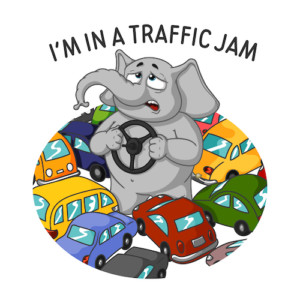 copy. Facebook is displaying your ad, your CTR's are high, CPM's are oddly cheap and your relevance is scoring above 7, but the only metric that matters isn't showing more than 0.
copy. Facebook is displaying your ad, your CTR's are high, CPM's are oddly cheap and your relevance is scoring above 7, but the only metric that matters isn't showing more than 0.
Conversions are the only thing you should be focusing on in your data when starting. It is this metric alone that will either make or break your business. It doesn't matter what your CPM, your CTR or your relevance etc without you making some profitable conversions.
The data can provide some telling insight into why you may be losing a sale but when you're starting out this can be too much, too soon.
There are so many variables in eCommerce it is your job as a store owner to make sure you remove as many as possible. Below are the keys to getting that traffic converting.
How to Build a Trustworthy Website
We are going to start at the very beginning and cover off on the elements of your website that will ultimately increase your conversions. Chances are you may already be past this stage but it is still worth considering…
Business Name Choice
People now, more than ever are incredibly tech-savvy and quick to take note of certain elements without even realizing what they are doing. Your business name will most likely be the first thing people come in contact with when finding your website.
Deciding on a name can be somewhat difficult. Thankfully there are websites like StartupBros out there willing to lend a hand.
Psychology is a massive factor in how your name will be perceived and Will (from StartupBros) shows you how to run a test to find the right name for your store.
Expert Tips;
- Keep it short – Short is memorable. Jack Wilshere is much easier to remember than Pierre-Emerick Aubameyang unless you love Arsenal… as I do…and then you just want to forget everything about the team atm.😂
- Don't be spammy – www.jewellery.com is much better than www.cheapestjewelleryonline.biz
- Do a domain name check to see if it's available. .com's are always best but try not to use hyphens.
- Do check the USPTO website to make sure it's not trademarked
Speed Matters
According to Maile Ohye a Tech Lead for Developer Programs at Google, suggests 2 seconds is the threshold for e-commerce website acceptability (and that statement was on a video from Google in 2010.).
If you'd like to see more on why your site speed matters check out KISSmetrics article “20 Ways to Speed Up Your Website and Improve Conversions” or “How To Speed Up Your WordPress Site – And Increase Organic Traffic By 39.1%”
Themes Built for Speed
- Konversion
- Turbo
If you already have a theme and want to see how fast it is, check out Pingdom.com. It will do an audit and give you a grading compared to other similar sites. Remember you are aiming for as close to 2 seconds as possible.
Reviews
Have you heard the saying “Birds of a feather, flock together”? Well, it holds true when it comes to your store. If you have lots of photo reviews of happy people showcasing a product you have sold them and 5 stars all over the place you will go along way to bridging the trust gap. You will be bringing those birds back to roost on your store.
If Amazon didn't care about reviews you might be forgiven for forgetting to include them. It is an absolute necessity to have an app set up to request reviews as soon as your customer receives their order. Woocommerce goes into the importance of reviews and how to get them in this article.
The app we always use is Loox Photo Reviews. They incentivize a photo review by automating discounts once a review has been received.
Web design matters
The branding of your website goes a long way to building trust. People have become accustomed to navigating through websites over the past couple of decades and each site has a very similar flow in terms of navigation and placement of imagery. i.e. Logo to the left or in the middle of the top navigation bar, menu to the right.
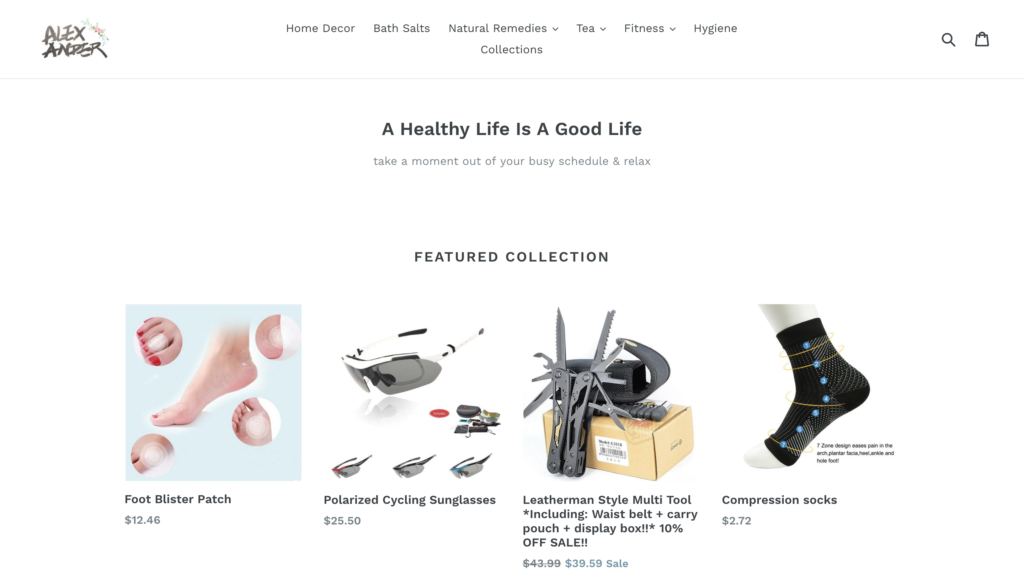
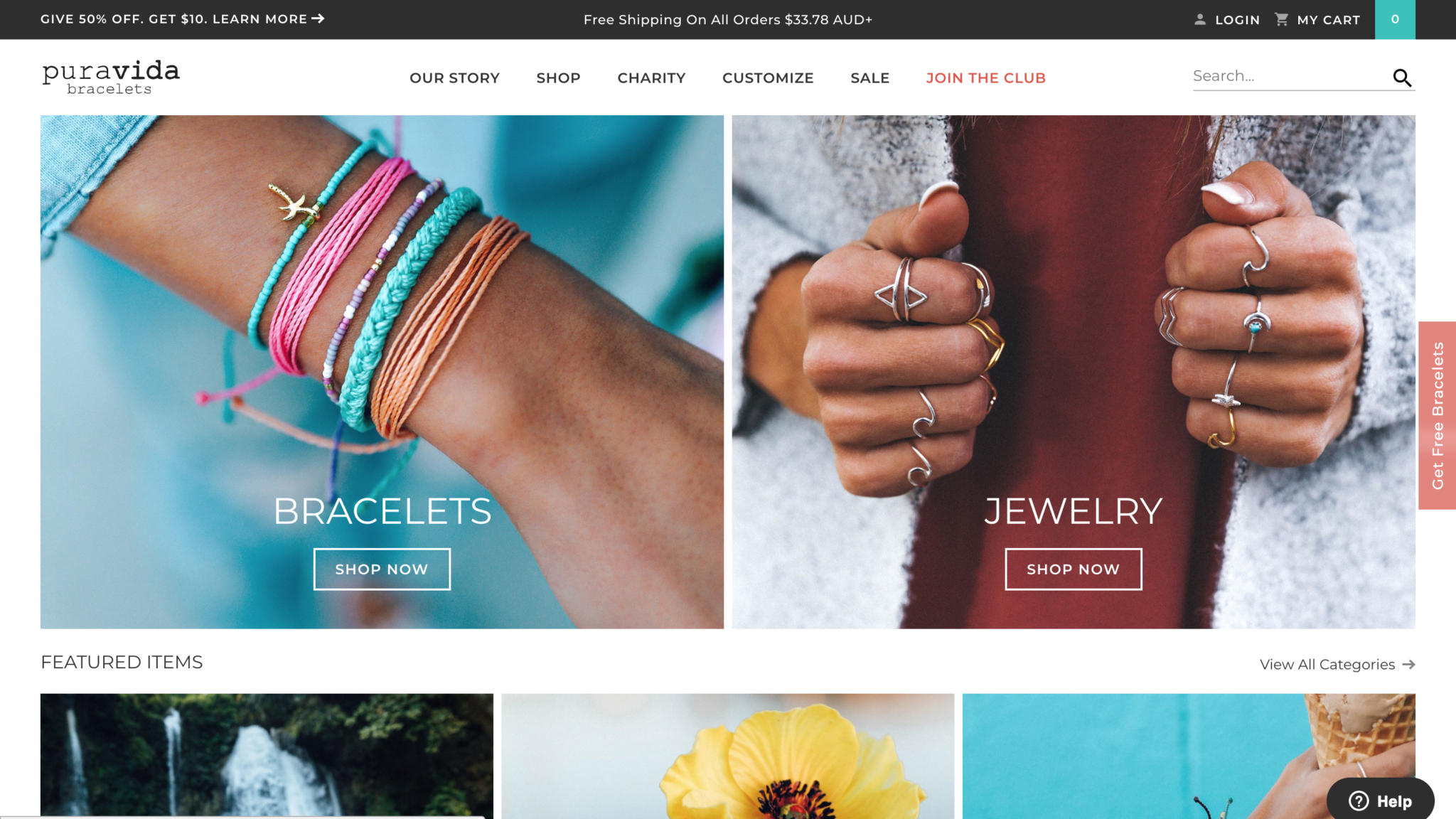
By going with a less common layout you are making the visitor think far too much before they even get to the product. I remember reading a quote by Steve Jobs in regards to the iPod, “If you can't play music in 3 steps then it's taking too long”.
It's exactly the same for websites. The fewer clicks and scrolling a visitor needs to do the closer they are to processing a payment for your product. Upwork recently wrote an article explaining the importance of site optimization, it backs up what we've been saying.
There is absolutely zero excuses for having a poorly designed website. Themes are incredibly cheap, layouts that would have cost $10's of $1,000's 10 years ago now cost barely a week of coffees, (and that's those overpriced twice blended lattes from Starchucks.)
Branding
Branding is incredibly important. Why would someone spend money with you when there are hundreds of other people out there selling the same thing?
You need to differentiate yourself from the others with the story you tell and the consistency with which you tell it.
Check out Canva's process for finding your brand story and use their infographic to nail it before you start running ads to your store. If the infographic doesn't load below click HERE.
High Res (But compressed) Images
Your customers need to see the product they are looking to purchase. The photography goes a long way towards whether or not your visitor checks out on your store. They need to be super sharp and show as much detail in the product as possible.
Keeping a consistent approach to your imagery across the store will lend itself to coming across with a more professional feel.
When you look at your collections or product pages do all the images line up? Is there consistency in the style of photography?
If you have a collection be sure to either use all lifestyle or flat lay (product on a white background) to showcase your products. Ensure they are all the same dimensions or reflect a Pinterest style layout (Organised chaos).
Using images imported directly out of AliExpress will do nothing to reassure customers you are a professional business.
Expert Tips;
- Consistent Dimensions of Images
- Consistent Style of Photography
- Ensure images are high res but are compressed to keep your site fast
- Look into lazyloading images
Sliders
Those sliders on the homepage can go a long way to slowing down your site. Despite showing your customers something that is not so relevant (as in the product they wanted to see) it can also increase the load time.
Yoast SEO explains it pretty well with their rant that you can read here.
Logo & Favicon
It surprises me the number of people asking for a site review in the Shopify forums that have not taken the time to review their own stores.
We often see sites that have logo's in the nav bar waaaaaaay to big, stores without favicons, and images imported from AliExpress. Not to mention product descriptions (sad face).
Typically the dead giveaway for lack of attention is the missing Favicon. If that's not present not enough attention has been paid to properly set up your store.
What is a favicon?
A favicon is a little icon/picture that shows next to a site's name (you'll  see it very clearly in Chrome.) Or in the picture to the right.
see it very clearly in Chrome.) Or in the picture to the right.
Typically most themes will have it uploaded to the same panel as your site logo (in the backend).
If you need to find a favicon generator there are plenty out there. Google will show quite a few options. The best idea is to create a square clear png for the upload.
What is a… the Logo…
The logo, as you'll well know, is the picture that speaks for your business long before anything else does. When adding it to your store ensure you take the time to make sure it fits in the navbar.
If it is an icon, it might pay to put it in the center with the navigation menu below. If you need a great logo quickly, check out Logojoy.
Remember, however, you want to keep your product in the first fold (the screen your visitor lands on when they first get to your store). If you put your logo in the center you'll still want to have it small enough that it doesn't take up the whole screen.
Ad Copy
Ad copy doesn't mean, Ad copy and paste. You don't need to be an SEO guru or a Copy God but it does take some effort to craft a description that sells.
First and foremost your title tags and image meta tags should reflect the name of your product. It's important to craft your site from the beginning with SEO in mind. It'll pay dividends down the track and is one of the highest ROI investments if done correctly.
You should, however, be focused on explaining what the product is in clear and concise terms so that your customer knows exactly what they're purchasing.
This guide from KISSmetrics (I know, we reference them a lot. With their guides and my experience you'll crush it!) will help you craft a product description that'd sell ice to the Eskimos.
Product Page
One of the most important parts of the whole shebang. As most marketers drive the majority of their traffic directly to their product pages it is important that you have it as professionally designed as possible.
The good news is that most of the premium themes have put a lot of thought into these particular pages. But, if they haven't what should you be looking for?
- Those high-res (but compressed) photos we've spoken about
- A good quality photo gallery showing a good selection of product photography
- An Add to Cart button that stands out from all the other content
- An Add to Cart button that is clearly seen in the first fold on mobile and desktop
- A thought-provoking description that makes a visitor want to purchase
For more tips on optimizing your landing page check out UpCity's “Five Tips for Optimizing E-Commerce Landing Pages”.
Remove Excessive Pop-ups & Sales Banners
Have you ever heard the saying “The more you want something the harder it is to get”? Well, this is the perfect example. If your store is screaming at your customer that you have a 50% off sale on your sliders, pop-ups & everywhere else chances are you're going to be poorer than a church mouse.
Things that can put people off… Up-sells when they click “Add to Cart” followed by more up-sells when they click “Checkout”. If you have to do an up-sell do it once, make sure it looks super clean and professional, and do it just once.
It's fine to inform your customers but don't be overly intrusive. There are lots of ways you can use pop-ups and using a professional template as a guide is a great way to start. Optimonk recently wrote an article “15 Inspirational Ways Top E-commerce Sites Use Popups To Maximize Conversions”
The Wrong Product – Don't fall in love with what you're trying to sell.
With both print on demand and drop shipping people all too often get caught up in the product they're selling. When we are launching (in our own stores) POD we tend to run at least 25-30 different designs each week. Not all of them scale, we don't fall in love with the product and wonder why. We launch more to make more.
Remember this great quote… from me “Bad ads will sell great products. Great ads won't sell bad products.”
Finding good quality products to dropship can prove incredibly overwhelming. Teach yourself how to find them by doing research on best practices. The last thing you want to be doing is filtering through poor quality suppliers on AliExpress. Check out SaleHoo's article on how to find a kickass supplier.
Having a consistent approach to product launches allows you to move quickly, cutting what doesn't work, scaling what does, and bringing in more winners on a week to week basis. If you're in dropshipping or print on demand, do not fall in love with your products.
Consistency in your launches is what will make your business successful. This in itself is the key to your success. To increase your chances of success have a very structured week.
This is what our work week looks like;
Designer;
- Tuesday – 25-30 design requests sent to the designer by COB (Close of Business).
- Wednesday – The designer submits preliminary designs for approval.
- Thursday – Designer sends finalized designs.
- Friday – Approved designs are sent for mockups to be created.
VA;
- Monday & Tuesday – Upload all designs & ad copy to the advertising platform (i.e. Facebook)
- Tuesday – All post IDs are recorded in Trello for quick reference when launching ads.
Campaign Launch & Monitoring
- Wednesday (AEST. Aussie Time) – All campaigns are launched & scheduled to start delivering at 12:00 am Thursday EST.
- Thursday – First round of scaling.
- Friday – Cutting and scaling.
Conclusion
There you have it. Certainly not an exhaustive list but certainly one that you can use as a reference when reviewing your store. Start with the customer first and think about what it is you like to see in a site you purchase from…
Ask yourself some simple questions, do you like to see trust badges? Do you like to see reviews? Do you like to be bombarded with pop-ups?
Be very critical of yourself. It's not hard to pull up an eCommerce site that is doing exceptionally well and use it as an example of what you're trying to achieve.
